When people talk about their hobbies, it is sometimes difficult for them to remember how they started. But in the case of astronomy enthusiasts, this is not the case: they usually remember well when and how they became interested in the sky. Most often, it starts with the Moon or some bright planet seen through a telescope. That is why amateur astronomy is mostly associated with observational instruments. However, there are some types of astronomical research that even a novice amateur can do, and what’s more, they don’t require any sophisticated equipment at all (a notebook and a pencil are often enough).
Basic knowledge
The first piece of advice for beginner astronomers is this: look for like-minded people! If there is an astronomy club or group in your city, you will get the best advice on what and how you can observe (with a local focus), and at best, you will be able to look through different instruments, compare them and determine what works best for you.
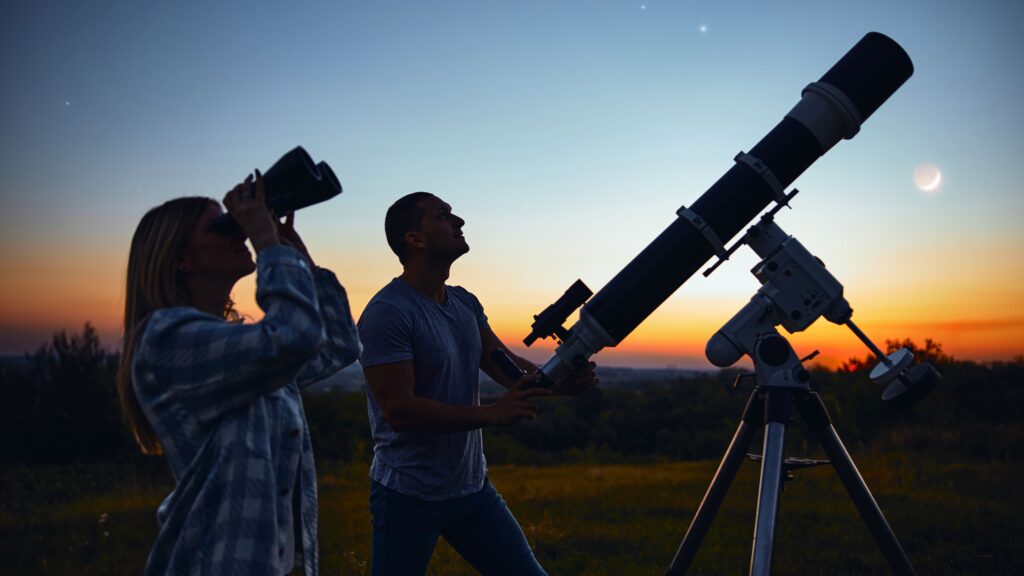
Source: iStockphoto/Getty Images
But you can also do some things on your own, and — importantly — without a telescope. First of all, you need to get to know the starry sky at least in general: find out what the world’s pole is and what the North Star has to do with it, memorise the positions and names of the brightest stars and the appearance of the most prominent constellations, and understand the conditions of their visibility depending on the time of day and season. In the past, star charts were purchased for this purpose. Nowadays, amateur astronomers have access to many computer programs and mobile applications that display the celestial sphere and all the interesting things that are on it. It might seem that nowadays it is not necessary to keep the positions of stars and constellation configurations in mind… but we do not walk the streets of a familiar city, constantly checking our position with the help of a GPS system! It can be said that the sky should become as much a “home” for an astronomy enthusiast as the immediate neighbourhood of his or her home. Moreover, there is nothing complicated about it.
The next stage is the Moon, planets and zodiacal constellations. Knowledge of the lunar phases is necessary not only to tell your neighbours from the next door cottage when they should to plant herbs and vegetables. In fact, between the first and last quarter (including the full moon), the conditions for observing many faint objects in the starry sky become unfavourable due to the intense illumination created by our natural satellite. In big cities, where the level of light pollution has long been off the charts, we don’t notice this, but when we do our observations in “darker places”, this factor becomes a key one.
The situation with planets is even more interesting. Why are they visible only at certain times? What is aт opposition and why are Mercury and Venus never in one? Was it true that the great Copernicus was never able to see Mercury in his entire life? Yes, observing the planets requires a fairly powerful telescope, but first you need to know where to aim it. An added bonus: if you can explain to a visiting astrologer the difference between “zodiac signs” and zodiac constellations, you can significantly boost your own self-esteem and make an important contribution to debunking unscientific ideas.

And the last type of celestial phenomena that an amateur astronomer should know about are the “near-field phenomena” that occur in the Earth’s atmosphere: meteors, auroras, and silver clouds. You can also add artificial objects in Earth orbits (including the International Space Station). This is the end of the basic set of astronomical concepts and the beginning of a “narrow specialisation”.
For the benefit of science
Meteors. Surprisingly enough, there is a certain category of astronomical observations that do not require any additional instruments, but are of great scientific value. We are talking about meteor observations. Billions of interplanetary dust particles of various sizes and masses enter the Earth’s atmosphere every day. Professional astronomers simply do not have enough eyes to register at least a few percent of their number. In addition, many meteors appear in places where there are no observatories nearby, such as over deserts and oceans.
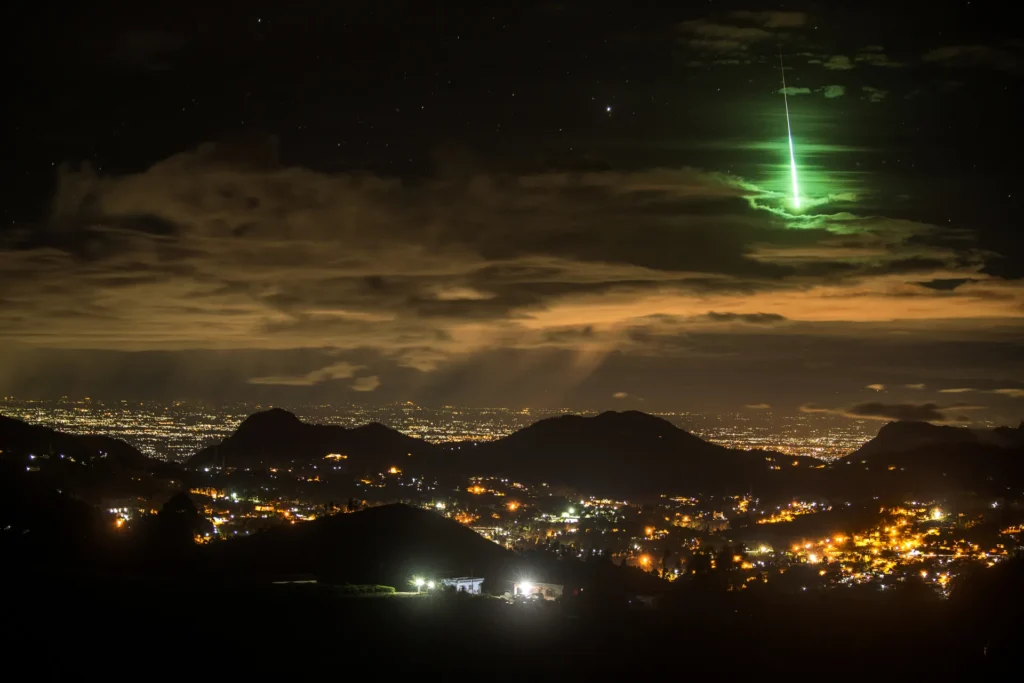
By registering on meteor observer sites, you can learn more about proven techniques that allow you to extract maximum information from fast-moving shooting stars and start sending your own data for further processing by professionals. Even a simple count of meteors with the exact time of observation, as well as the location and atmospheric conditions, can already tell us a lot about the distribution of matter in interplanetary space. And if we add information about the direction of flight, brightness, colour and apparent speed, it will constitute a solid set of characteristics of the “alien from space”, which will allow us to estimate its size and belonging to a particular meteor shower. And all of this without any extra investments!
Such observations have their own separate “bonus” — the opportunity to see a bright bolide (a trace of a large body having ripped into the Earth’s atmosphere) and even a meteorite fall. Perhaps your observations will help you figure out where exactly on the Earth’s surface you should look for “celestial stones”.
The Moon. Humanity has been observing our natural satellite for a very long time. We even have already managed to send our representatives to its surface. It would seem that we know everything about it. Even with the naked eye, we can see a disc with many details. When using at least a small astronomical instrument, the number of these details increases thousands of times, and it becomes increasingly difficult for one person to “cover” them all.
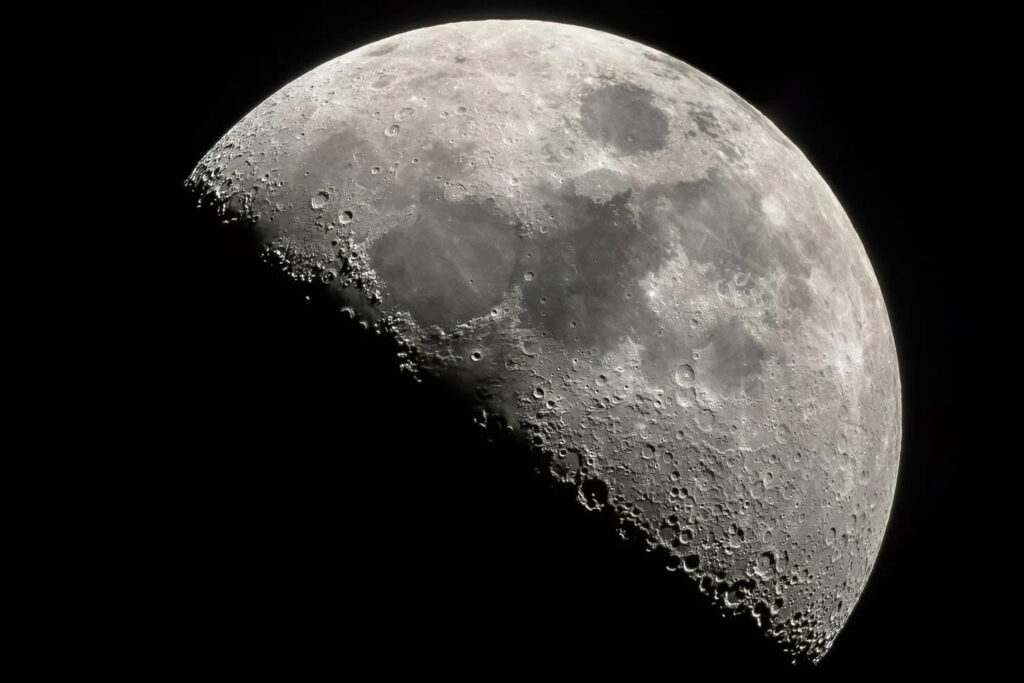
However, despite the huge number of detailed photographs of the Moon taken with large ground-based telescopes and interplanetary spacecraft, amateur observations of this celestial body have not lost their relevance. First of all, this concerns the so-called transient lunar phenomena — flashes or darkening of certain areas. It is believed that these may be manifestations of processes in the sparse dust environment of our night luminary associated with electrification under the influence of the solar wind (a stream of charged particles continuously emitted by the Sun). The presence of endogenous phenomena on the Moon cannot be ruled out: its interior has not yet cooled down completely and is quite capable of producing short-term gas emissions. When they hit the Sun’s rays, they are observed as small foggy spots that quickly dissipate.
Another interesting topic for observation is the collision of meteoric particles with the lunar surface. If they occur on the unlit part of our satellite and the meteors are large enough, they can be seen as flashes visible even with small telescopes. Obviously, such observations will be most successful during the maximum powerful meteor showers — Geminids, Perseids, η-Aquarids, Leonids.
Observations of occultations (the closing of stars by the lunar disc) are of particular scientific value. To do this, you need to know your geographical location and have a well-adjusted watch with the ability to record time. Meanwhile, it is satisfying enough just to look at our satellite through a small telescope, tracking the changes in its phases, the appearance of mountains and craters during sunrise and sunset over them. In general, the Moon is one of the most “grateful” objects for novice astronomers, and it can be viewed even in cities where the sky is heavily lit by artificial light sources at night.
The Sun. Until recently, our daytime luminary was not popular among astronomy enthusiasts. Most people paid attention to it only during periods of high activity, when it was covered with a large number of spots, or during solar eclipses. The latter do not occur very often in any single area on Earth: the next total solar eclipse in Ukraine is expected in 2061, and an annular eclipse is expected on 1 June 2030. Partial eclipses are observed at different parts on Earth’s surface much more often (once every 2-3 years on average), and we are currently experiencing an interesting period when they have been visible in Ukraine for three years in a row — on 21 June 2010, 10 June 2021 and 25 October 2022.
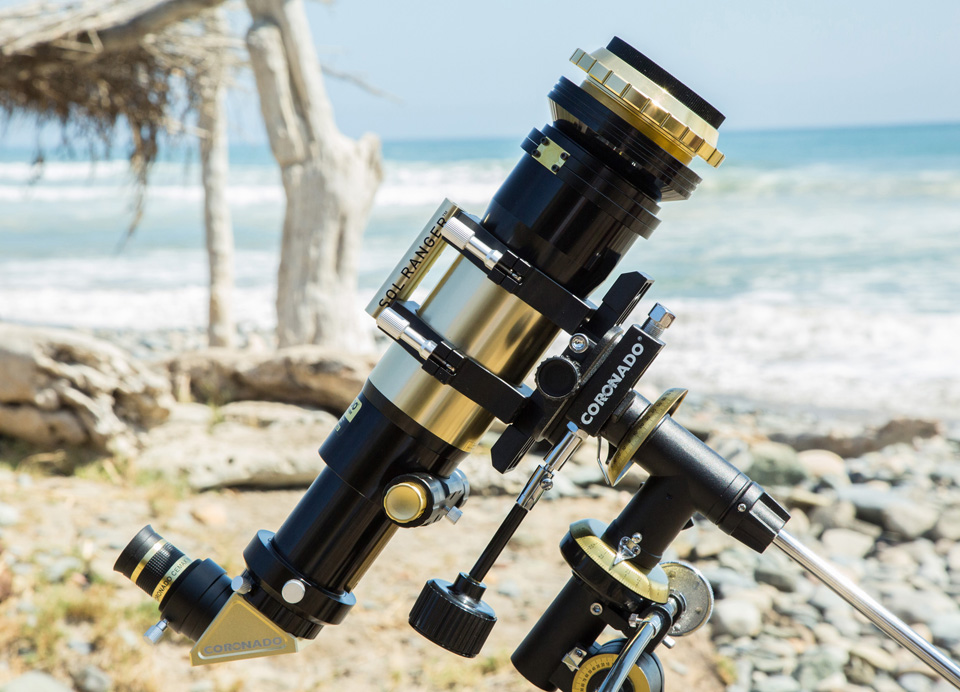
But at the beginning of the 21st century, a specialised Coronado solar telescope equipped with a light filter that transmits only the spectral band of ionised hydrogen Hα appeared on the market. It allows observing the surface of the Sun in unprecedented detail under normal clear skies. Using it you can see prominences almost constantly near the edge of the Sun’s disc and even discern changes in their shape within a short time.
However, simply looking at the Sun’s disc with a sufficiently powerful instrument (ALWAYS protected by a special low-bandwidth filter) can also be an interesting activity. Some observers have managed to witness the most powerful solar flares in this way.
Planets. Here we move on to those areas of astronomy where, unfortunately, amateurs can do little. The six planets of the Solar System and their moons are actively observed with large ground-based and space telescopes (the exception is Mercury, which is constantly near the Sun), and automatic vehicles are now operating in orbits around Venus, Mars, and Jupiter. Planetary astronomy requires powerful telescopes with a magnification of at least a hundred times, and this, in turn, places demands on the quality of the air at the place of observation: if it is too unstable, its heterogeneities will completely “blur” all the small details.
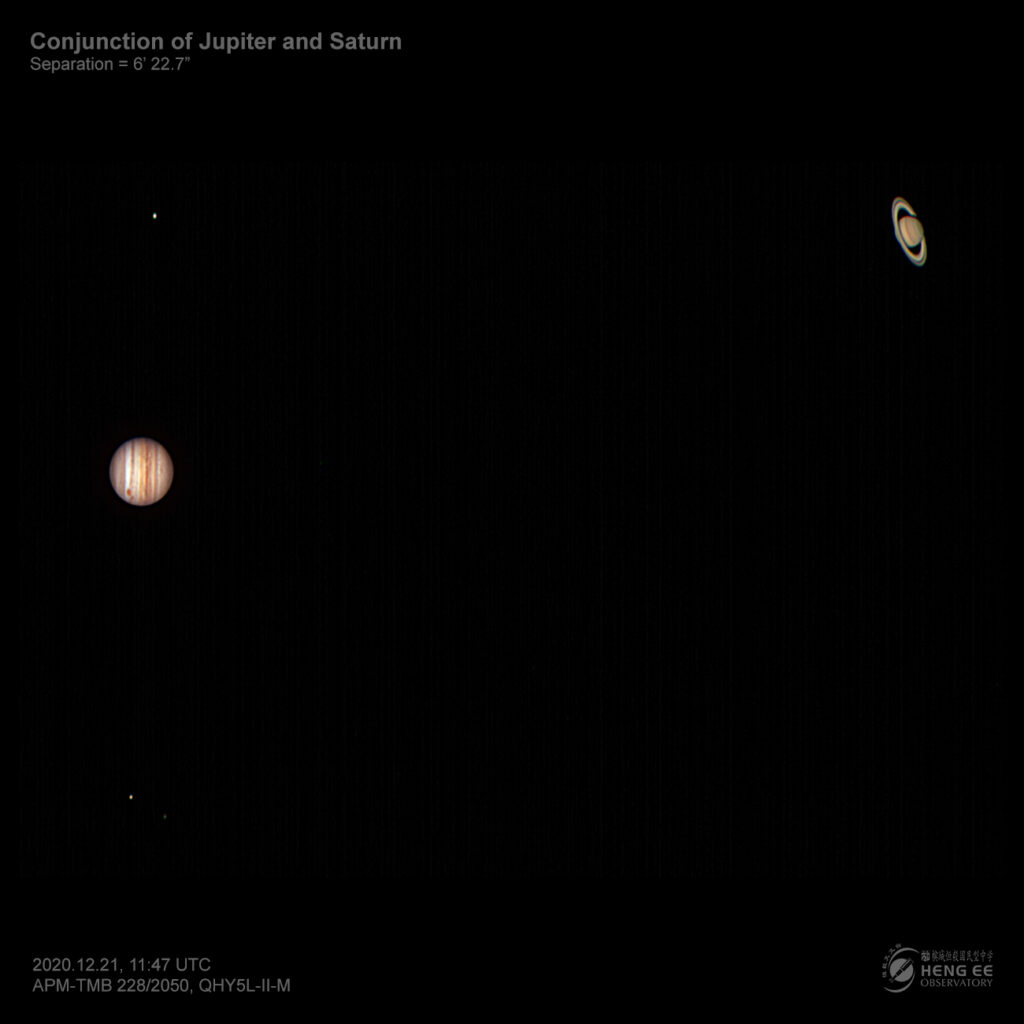
That’s why astronomy enthusiasts most often look at the planets for informational purposes. However, some of them spend a lot of time looking for rare “white spots” on Saturn and Venus, studying changes in Jupiter’s clouds, and trying to spot traces of “foreign objects” falling in the gas giant’s atmosphere. During the great confrontations of Mars (the nearest of which is expected in September 2035), all amateur telescopes are sure to aim at the Red Planet. In fact, even during less convenient confrontations, which occur approximately every two years, Mars also captures the eyes of astronomy fans. It is worth keeping in mind that even with a very powerful instrument, we will unfortunately never see it as it is in the Hubble Observatory’s photographs.
Comets and asteroids. These two types of objects are grouped under the name “small bodies of the Solar System”. Amateur observations of them are highly encouraged, and special groups and organisations are set up to organise their results. The situation here is the same as with meteors: there are a lot of comets and asteroids (in every moment a couple of dozen comets are visible in the sky, 3-5 of which are accessible to small amateur instruments, and on average, a “tailed star” appears once a year, which is easy to spot with the naked eye) and not all professional observatories have time in their schedules to monitor them, so amateurs may well be really helpful here.
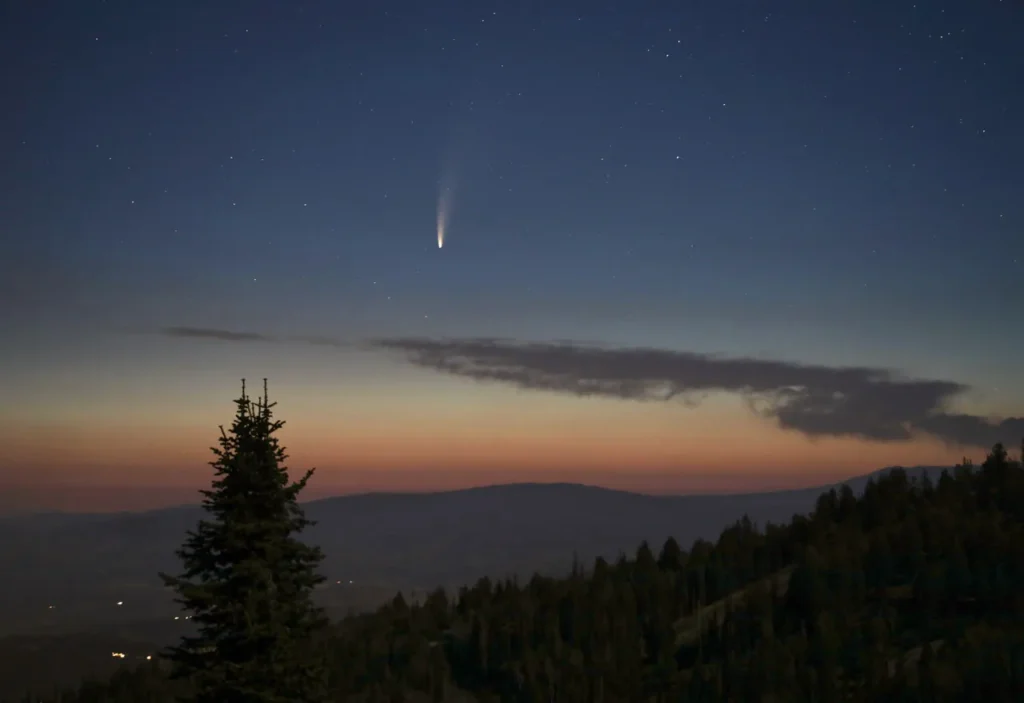
The main task in observing small bodies is to estimate their apparent brightness. For this purpose, so-called comparison stars are used. The more of them are visible in the same field of view as the object under study, the better. Therefore, instruments with a not very high magnification but a wide field of view are best suited for such observations (for example, astronomical binoculars with a magnification of 10 to 20 and a lens diameter of 50-80 mm).
Observations should be made in areas remote from large cities or other powerful sources of artificial light (comets are particularly sensitive to sky brightness due to their “hazy” appearance). There are plenty of methods for assessing the brightness of comets and asteroids that can be found on specialised websites and in the literature, and there are also many international organisations where amateurs send their data. Objects flying close to the Earth are of particular interest — they move through the star field very quickly, which can be seen in just a few minutes of observation. Many times, astronomy enthusiasts have even managed to discover comets or their outbursts on their own.
Another way for amateurs to contribute to professional science is to register asteroid coverings of stars. Even the information that a short-term “fading” of a star was observed in a certain place, which was obscured from the observer by a weaker and darker “celestial stone”, is already useful for scientists. Even more valuable data is the exact time of the beginning and end of the phenomenon, but obtaining it requires appropriate equipment and experience.
Deep space. All objects located beyond the gravitational influence of the Sun, i.e. at a distance of more than one light year, belong to deep space. It contains an incredible variety of cosmic phenomena — from single, double and multiple stars, star clusters and remnants of dead stars to distant galaxies and quasars, which are billions of light years away. There is something to see with all types of instruments. Scattered star clusters, large gas nebulae, and relatively close galaxies will be shown in all their glory with binoculars. Globular clusters, double stars, and planetary nebulae will require a fairly powerful telescope; instruments with an objective diameter of more than 100 mm will show distant galaxies; the nearest quasar can be seen with a 200 mm telescope. All of the above is true for good observing conditions — a clean, transparent atmosphere and no light pollution. Of course, it should be remembered that even the brightest objects for the human eye with its limited sensitivity will seem only a “pale shadow” of the amazing images taken by large ground-based observatories or the Hubble telescope. The vast majority of nebulae and galaxies will be grey, because we can’t see colours at low luminosity.
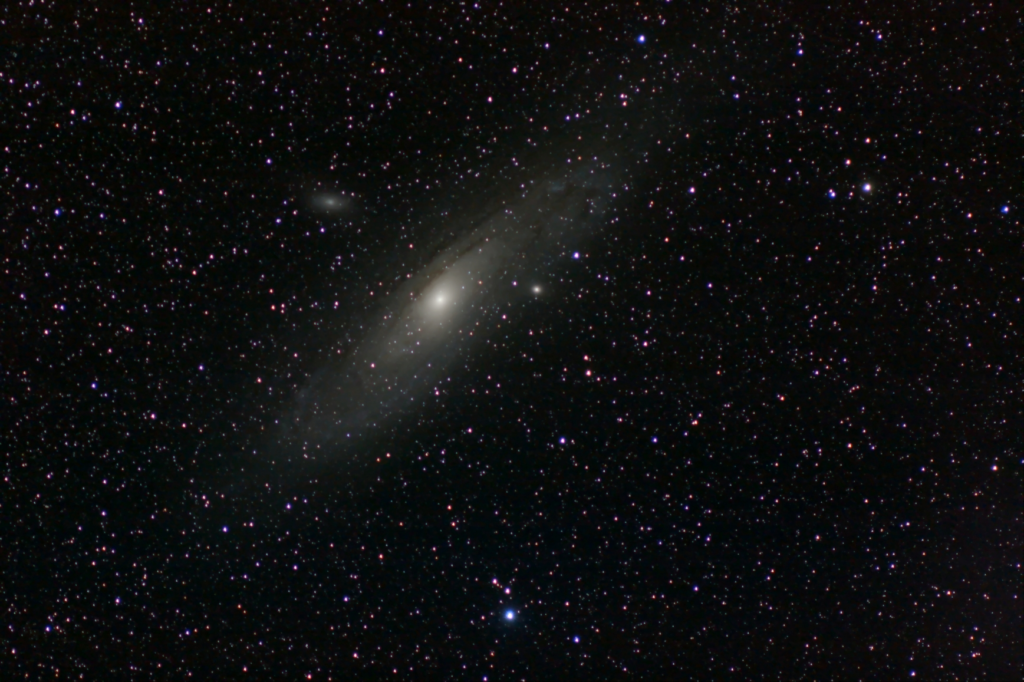
But even among this diversity, amateurs can find their “field of action”. Around the world, millions of people observe variable stars every night, assess their brilliance, and send the results to a centralised processing centre. Quite often, such donations from amateurs allow scientists to make important discoveries. The same applies to novae and supernovae (the latter are observable only in other galaxies — the last supernova within the Milky Way was seen back in 1604). The requirements for instruments are quite clear: the fainter the object chosen for study, the larger the diameter of the telescope must be to see it.
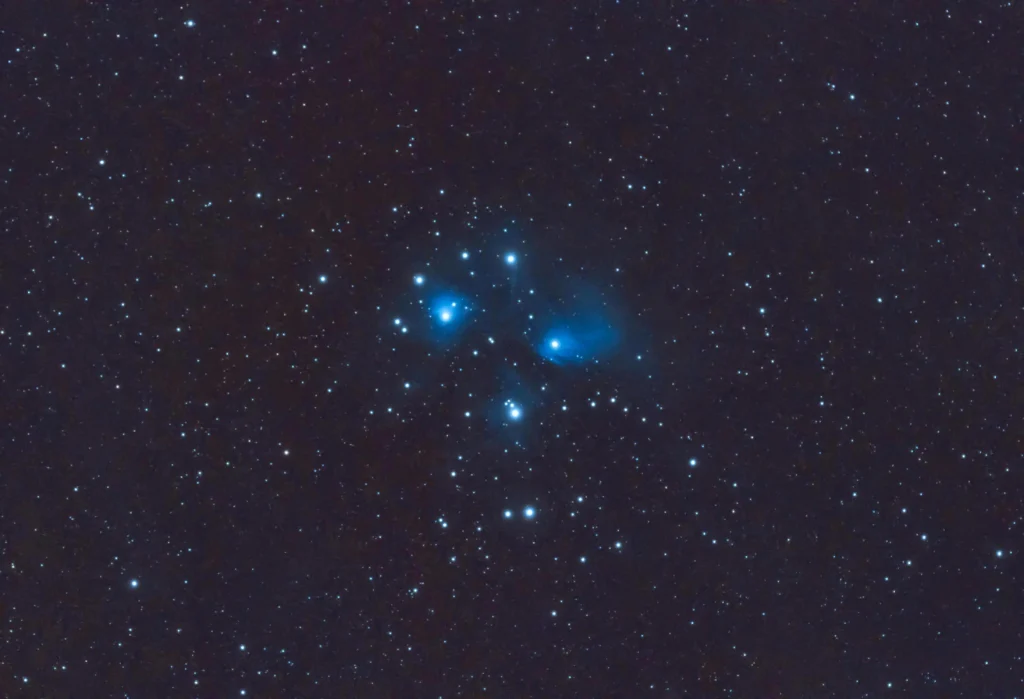
In general, “travelling in deep space” brings mostly aesthetic pleasure, allowing us to see gas and dust clouds where stars are born (our solar system was born in a similar “cradle” more than 4.5 billion years ago) or distant galaxies that we see as they were tens of millions of years ago due to the speed limitations of light. It is also worth getting acquainted with the Charles Messier catalogue of nebulous objects and the most remarkable items in the New General Catalogue (NGC), so that you can more easily find the treasures of the starry sky and introduce them to others.
Upgrading your eye
From all of the above, it is easy to conclude that the choice of telescope for an astronomy enthusiast directly depends on the chosen “specialisation”, which, in turn, is related to the possibility of regular trips to dark locations and, in general, the astroclimate of the place of residence. You can look at the moon and planets even in big cities, and the amount of what you see depends only on the instruments available. On the other hand, it is better to admire “star fields”, nebulae, and comets away from large settlements, and often even a small telescope can provide important scientific results during such observations.
Here it is worth clarifying which telescopes are considered “small” and which are “large” or “medium”. A couple of decades ago, when only the Soviet Mizar reflector with an aperture of 114 mm was commercially available, it was already classified as a “large” telescope. Now the situation has changed dramatically, and the boundaries of “greatness” have moved upwards. There is no unanimous opinion on this graduation, but as a first approximation, telescopes with a lens diameter of less than 100 mm are “small”, the range of 100-250 mm are “medium”, and over 250 mm are “large”.
The diameter of the lens is constantly mentioned here because this value determines all other characteristics of the telescope — the maximum possible magnification and the penetrating power (the faintest stars that can be seen through it under the best observing conditions). For reflector telescopes with parabolic mirrors, the highest magnification can be calculated by multiplying the diameter of the entrance aperture by about one and a half, meaning that a 114mm instrument can “withstand” a 170x magnification without significant loss of image quality. This magnification is achieved with the help of a suitable eyepiece.
Large nebulae, star clusters, and long tails of comets should be viewed through large telescopes, but with the lowest possible magnification to obtain the largest possible field of view. It can be determined by dividing the diameter of the objective lens by the size of the human pupil in the dark (6 mm on average). Consequently, the same 114 mm reflector will work best with such objects at a magnification of only 20 times.
However, as already mentioned, before buying a large, expensive instrument, you need to decide on your “astronomical specialisation” and the place of observation. It is a shame when a powerful telescope receives a “permanent residence” on the balcony of a city apartment, due to the impossibility of regular trips to dark areas, and gets used only to occasionally look at the Moon or bright planets.
And there is one more thing worth mentioning: astrophotography. Almost everyone who looks through the eyepiece of a telescope for the first time wants to leave an image as a souvenir (especially since almost every phone now has a camera). Of course, such amateur photographs are to be welcomed. However, their quality is far inferior to photographs of celestial bodies taken with the appropriate equipment and with basic experience. Astrophotography requires much more financial investment and time than visual amateur astronomy, and here you cannot do without the help of those who have already achieved something in this field. Perhaps among them there will be those willing to share the secrets of their skills on the pages of our magazine. We welcome you. For now, we wish you as many positive impressions as possible from your encounters with celestial bodies and phenomena seen with your own eyes!

